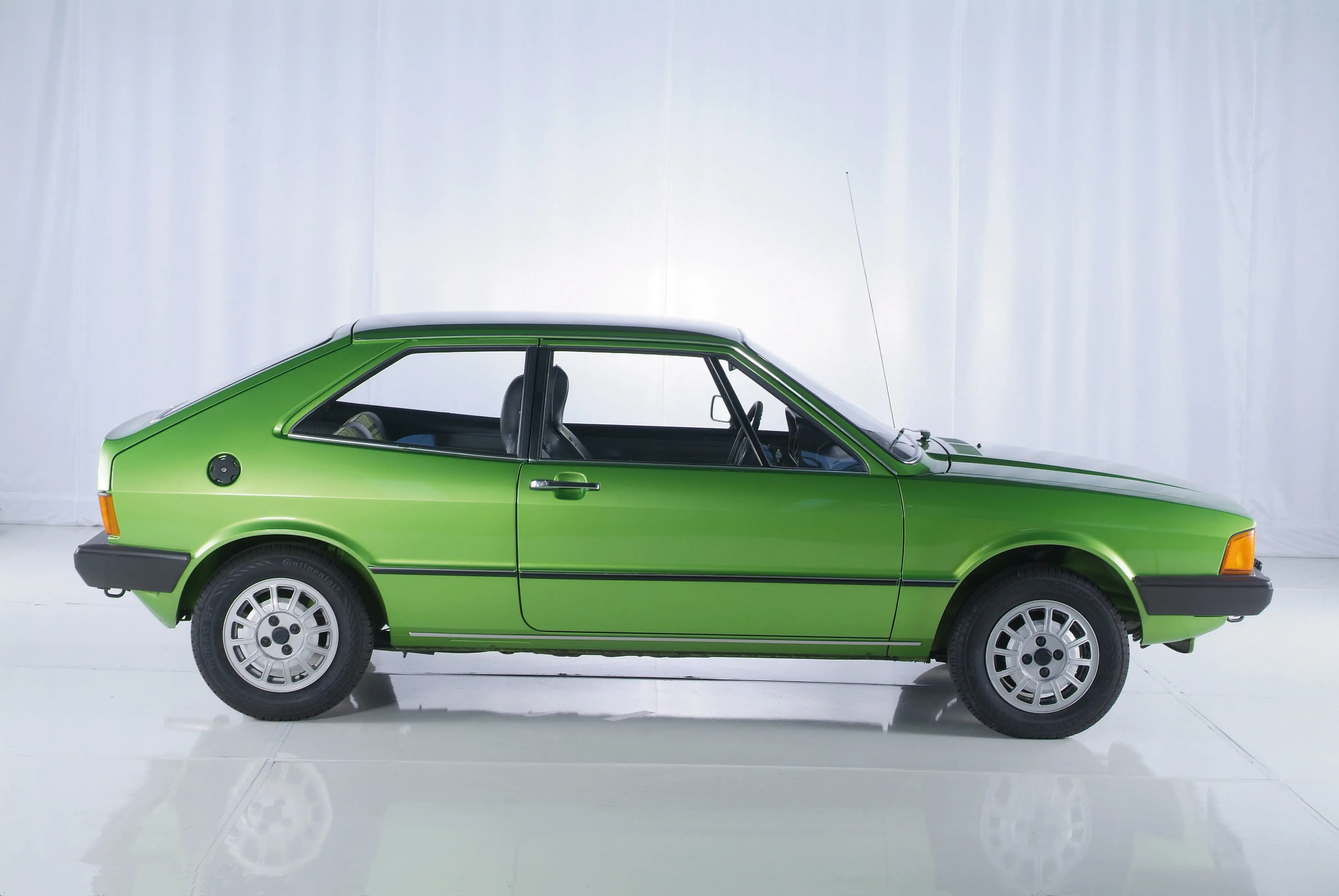THE VOLKSWAGEN SCIROCCO AT 50
18 March 2024
The 1974 Geneva Motor Show was the launch venue for one of Volkswagen’s most important models. The Scirocco was their first transverse engine car and their third front-wheel-drive vehicle, after the 1970 K70 and the 1973 Passat. When production ended in 2017 in its third incarnation, it had helped to redefine the Volkswagen name.
The Scirocco’s origins date from 1969, when VW’s CEO Kurt Lotz was highly impressed by the designs created by Giorgetto Giugiaro displayed at the Turin Motor Result. As a result, Volkswagen invited him to style Project EA337, an FWD car that eventually became the Golf.

Giugiaro further suggested the EA337 could form the basis of a sporting model. As the story goes, he directly approached the Osnabrück coachbuilder Karmann, who made the Beetle-derived Karmann-Ghia Type 14 since 1955. Karman officially presented Giugiaro’s idea to Volkswagen. They were initially unkeen, but the company did need a rival to the Ford Capri and the Opel Manta A. Furthermore, Karmann had to make a Type 14 replacement if they were to remain in business.
The new coupe received VW’s approval in autumn 1971, and Karmann would be solely responsible for its construction. They refined Giugiaro’s design, and the Scirocco also served as a test bed for the Golf; the two had suspension and floorplans in common. Production commenced on the 4th February 1974.
The original line-up consisted of seven models, commencing with single-headlamp 1.1-litre and 1.3-litre N. At the top of the range, the 110 mph TS had quad headlamps, and a twin-choke 1.5-litre engine offering 85 bhp power. UK sales began in October 1974, with Volkswagen Audi Garages importing three versions, all fitted with the 1,471cc unit. The TS cost £1,995; the rather stylish alloy wheels cost another £64.35. One witty campaign promoted the Scirocco as a radical departure from the marque’s tradition - “I actually went in to get a Beetle, but this is all they had… honestly darling”.
The December 1974 edition of Car magazine evaluated the TS opposite the Ford Capri 2000 GT Mk. II and the Toyota Celica ST. Despite grumbling about the lack of cabin space and the quality control, they found the VW “the driver’s car of the three”. Autocar thought the TS was on the expensive side, especially when compared with its Audi 80 GT stablemate. However, “providing one does not need the back seats seriously, it certainly provides a lot of fun in an interesting, and on the whole, enjoyable car”.
Motor Sport complained shortly after launch: “This new VW is pretty (more so in the flesh than photographs) and practical for a family with young children, but it certainly doesn’t feel very sporting”. Many customers disagreed and by 1975, the annual sales figure was 58,942 - 6,000 more than Volkswagen’s projections. US sales commenced that year, and Road & Track raved, “This slick little coupe makes far more sense as an enjoyable 2+2 than anything we’ve seen yet”.
In 1974 Autocar mused:
One cannot help thinking having spent more than a quarter of a century educating people to think of Volkswagen as sober and solid, it might have been easier to launch these VWs under some entirely different make name.
An Audi (or even NSU) Scirocco is not implausible, but part of its role was to alter perceptions of the Volkswagen name. And for an idea of the Mk. I’s many charms, here is Tony Bastable testing a bright yellow TS for the Drive In ITV programme in 1974. In his words, “It really does look very nice – and who could resist that tartan upholstery?
